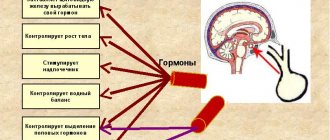A planned caesarean section (PCS) is an operation to remove the fetus from the uterus (delivery) with pre-known indications and a set date (usually 38-39 weeks). Prescribed for contraindications to normal childbirth, both from the mother (narrow pelvis, diseases) and the fetus (severe condition, large). Before the operation, it is necessary to undergo tests and an ultrasound, then the operation can take place on the day of admission.
During this procedure, an anesthetic is administered, the skin of the lower abdomen is cut, then the uterus is cut, the fetus is removed and the tissue is sutured in layers. In uncomplicated cases, this lasts no more than 1 hour. After a caesarean section, the first few days of feeding are gentle; you can get up after 6 hours, walk after 12 hours, and on the 4-6th day the woman is discharged home.
Planned caesarean section or emergency caesarean section? How and when it is carried out
A caesarean section is the birth of a baby through an incision in the mother's abdomen.
Currently, this operation is one of the most common in the world, and its frequency continues to increase every year. For example, in Russia the frequency of cesarean sections is 20% and on average increases by 1% per year. In the USA this frequency has reached 30%. There are countries (Mexico, UAE) where the operation is performed in 40-50% of births. The cesarean section operation is one of the oldest. However, over the centuries, it continues to raise questions not only among women, but also among doctors. Answers these questions
expert Oleg Radomirovich Baev :
- obstetrician-gynecologist, doctor of medical sciences, professor at the National Medical Research Center for Obstetrics, Gynecology and Perinatology named after V.I. Kulakova
- work experience - 34 years
- doctor of the highest category
- Member of the Association of Obstetricians and Gynecologists.
Advantages and disadvantages of various methods of delivery
Supporters of one or another option try to list as many “pros” as possible of the preferred method of delivery and “cons” of the undesirable one. The truth is that physiological birth is truly a natural process. But they can also be painful, uncomfortable, and a sudden change in the situation will require urgent surgical intervention. There are also women for whom surgery is indicated for health reasons.
Pros and cons of natural childbirth
Self-delivery at term is the best scenario for ending the pregnancy. What benefits do they give to women and children? Here are the main advantages:
- a woman can recover quickly and leave the maternity hospital within 2-3 days;
- hormonal “readiness”, rapid attachment to the breast, and being together trigger lactation. The process of breastfeeding is established in a short time;
- the likelihood of postpartum complications is lower than after surgery;
- there are no undesirable effects of drug therapy.
WHO experts indicate that the mortality rate during natural childbirth is 5 times lower than during cesarean section. However, the news article that mentions this fact does not contain data on the initial health status of the mother and fetus.
Proponents of childbirth exclusively through natural means tend to describe the process as long, joyful, easy, and characterize the pain as tolerable. However, complications during childbirth are also possible: characteristics of the mother and child that already exist at the beginning of the process or acute situations that arise. The first group includes:
- multiple pregnancies;
- post-term pregnancies;
- premature rupture of water;
- incorrect presentation of the baby.
Acting in the interests of the mother and fetus, the obstetrician can pre-refer the woman for a CS.
There are no less formidable complications that are impossible to predict:
- abnormal position of the fetus;
- amniotic fluid embolism;
- labor disturbances;
- placental abruption, bleeding;
- uterine rupture;
- loss of umbilical cord loops.
While describing the desire to give birth on their own as a conscious choice, women are not always ready to accept its consequences:
- injuries in a woman in labor;
- death of mother, child;
- severe pain syndrome.
The pros and cons of natural childbirth for a child can be described in three main points:
- the baby passes through the birth canal and turns out to be more prepared for life in new conditions;
- the digestive tract is more quickly populated by normal flora;
- Injuries to the child, bone fractures, and hematoma formation are possible. The risk increases in cases of rapid or rapid labor, and the speed of labor cannot be predicted.
Speaking about the “ordinary” conditions that accompany vaginal childbirth, obstetrician-gynecologists describe damage to the genital organs and pelvic floor muscles in women. So a large fruit or low elasticity of the connective tissue causes ruptures. To facilitate the passage of the baby, the obstetrician performs an episiotomy, after which recovery is faster than with a mechanical rupture. But in both cases, stitches are placed on the perineum. The mother's quality of life deteriorates. Until healing, she is forbidden to sit down; she “adapts” to feed the baby while standing or lying down. Subsequently, cosmetic defects may occur in the perineal area.
Strained pelvic floor muscles cause stress urinary incontinence in 10% of women who have undergone natural childbirth.
It is also worth noting that the first period is the most painful stage of childbirth. Dilatation of the cervix may be accompanied by nausea, vomiting, and chills. Lack of preparation can lead to the fact that the woman is “lost” from pain, begins to panic, and the blood supply to the child suffers. To alleviate the condition, epidural anesthesia is increasingly prescribed, but it is not allowed for everyone.
Pros and cons of caesarean section
Not all women are ready to experience all the sensations that occur during natural childbirth. Some are preparing for surgical intervention and trying to find indications for a planned CS. What are the pros and cons of such an operation for mother and baby? Among the most common:
- the ability to prepare for or “schedule” surgery for a specific date;
- absence of pain characteristic of contractions.
- prevention of perineal injuries, prevention of hemorrhoids. stress urinary incontinence after CS occurs in only 5% of women;
- The operation takes less than an hour, most of it is spent on suturing;
- less trauma to the baby;
- the opportunity to rely on the actions of doctors and not worry about doing something “wrong” and harming the child.
But if operative delivery had only advantages, the CS rate would probably be higher. What do obstetricians-gynecologists say about the “cons”:
- the woman loses more blood, replacement solutions or blood products may be required.
- the patient undergoes anesthesia, recovery from which is incomparable to recovery after childbirth;
- After the operation, the woman receives antibacterial therapy and cannot immediately put the baby to the breast; the lack of timely “switching on” of lactation can lead to difficulties with breastfeeding in the future.
- postoperative bleeding and hematoma formation at the suture site.
- formation of adhesions in the abdominal cavity.
- longer recovery.
- limited number of CS: obstetricians recommend no more than three operations during a lifetime, as the risk of uterine rupture and placental attachment abnormalities increases.
- difficulties with the maturation of the child’s gastrointestinal tract due to the fact that it was not populated in a timely manner by the mother’s microflora;
- violation of the baby’s adaptation to new conditions, respiratory distress syndrome.
Why is there such an increase in caesarean sections?
- Most operations are carried out in the interests of the child, because once upon a time this operation was created specifically for the purpose of saving the life of a newborn.
- A large percentage of women think about having a baby late, and this leads to a number of complications during pregnancy.
- Extragenital diseases in women: cardiovascular (heart defects, arterial hypertension), diseases of the kidneys, adrenal glands, thyroid gland, obesity, disturbance of vaginal biocenosis, etc.
- Induced (using drugs and ART methods) multiple pregnancies.
Indications for CS
- Disproportional discrepancy between the size of the child (usually the head) and the pelvic size of the mother. Ideally, such a disproportion should be determined before birth, but sometimes this fact is discovered only during the birth process. In this case, a CS is performed during labor.
- Presentation disorders, that is, placing the baby for birth at the entrance to the pelvis not with the head, but with another part of the body. A gluteal, transverse, head-first presentation is possible, but in this case the child is fixed in the small pelvis with his forehead or face, asynclitic insertion - the head is down, but nothing enters the small pelvis.
- Disturbances in labor, in particular a prolonged first period, and when providing medical care there is no result. In this case, a CS is also performed during childbirth, since it is impossible to predict such a course of events beforehand.
- Umbilical cord prolapse and risk of pinching. During childbirth, the baby lives and breathes umbilical cord blood. If the cord falls out, the baby’s body will squeeze it and the blood will stop flowing.
- Placenta previa: its pathological location, when after dilation of the cervix, the placenta moves away from the wall of the uterus, blocks the entrance to the pharynx and limits the supply of oxygen to the baby. May be accompanied by bleeding from 30 weeks.
- Another pathology of the placenta is its abruption, when it leaves the uterus too early. For the fetus, this is fraught with oxygen starvation, and for the mother, bleeding and pain. It also often becomes the reason for an emergency CS. If detachment occurs in the last stages of pregnancy, then the woman undergoes a cesarean section. However, this often happens directly during childbirth, and then the operation is performed for emergency reasons. Risk factors include smoking, hypertension, and maternal vascular disease.
- Pregnancy with more than one fetus increases the risk of complications for both mother and babies. Therefore, cesarean sections are performed more often in multiple pregnancies than in singleton pregnancies.
- Chronic diseases of the mother. Diseases of the heart, kidneys, blood vessels, including hypertension, asthma, COPD, high myopia, retinal pathologies and others, which can cause a sharp deterioration in the health of the mother and/or child directly during childbirth - they require a lot of effort and cause stress. Some infections can infect a child as they pass through. CS is a way to reduce risks in the listed cases.
- Diseases, fetal development disorders. If control examinations prescribed directly during childbirth indicate the child’s suffering (heart problems, decreased blood flow, etc.), then a cesarean section helps save the child. In the case of already diagnosed pathologies, the decision on CS is made based on examination data and current indicators.
Among other indications for CS it is worth noting:
- failure of the scar after a previous cesarean section;
- narrow dimensions of the pelvis or its deformation due to diseases;
- tumors, both genital and extragenital;
- myomatous nodes;
- previously performed plastic surgery of the cervix, vagina, including after ruptures;
- conception through in vitro fertilization, insemination if there are other indications;
- low weight fruit;
- complicated course of pregnancy due to infertility, postmaturity;
- critical condition of the woman in labor.
What is better - physiological birth or caesarean section?
Vaginal birth has a number of advantages:
- no significant blood loss;
- no risk of damage or infection;
- there are no complications associated with surgery, so the patient spends less time in the hospital and recovers faster.
However, in some cases it is preferable to be referred for a planned caesarean section.
Indications for elective caesarean section:
- if during multiple pregnancy the children are lying incorrectly. For example, during a planned caesarean section with twins, one of the children may lie transversely. Or a planned caesarean section may be prescribed for a breech presentation of one baby.
- if labor stops or progresses very slowly;
- the child’s condition worsens (compression of the umbilical cord or prolonged heart rhythm disturbance);
- threat to the mother’s health due to complications (preeclampsia) or diseases (cardiovascular, threat of retinal detachment, etc.);
- some maternal infections (HIV, herpes, etc.);
- placenta previa, when the placenta covers the exit of the uterus;
- premature detachment of a normally expanded placenta;
- discrepancy between the sizes of the pelvis and the fetal head;
- threatening uterine rupture (along the scar from a cesarean section or myomectomy);
- mechanical obstacles to the birth of a child (for example, fibroids in the cervix).
Preparing for a planned caesarean section in the maternity hospital
When preparing for a planned caesarean section, a woman must undergo an examination and provide research results before hospitalization in the maternity hospital:
- blood and urine tests;
- ECG, ultrasound;
- cardiotocography (fetal heart function).
If you have had a previous cesarean section (before the current birth), removal of fibroids or similar interventions, a statement is required indicating the volume, suture material, and recovery after the procedure. All this examination can be carried out in a hospital if hospitalization is carried out 2 weeks before the expected delivery.
Fetal cardiotocography
If the preparation was completed in the clinic, then the woman is admitted to the hospital the night before or on the day of the operation. Upon admission, she is examined by a gynecologist, surgeon and anesthesiologist; they may also involve other specialists for concomitant diseases (for example, a cardiologist). The doctors' conclusion indicates the possibility of surgical delivery, the type of anesthesia, and the need to prevent complications with medications.
The gynecologist evaluates:
- fetal heartbeat;
- position of the baby in the uterus;
- what presentation (part of the body that is closer to the exit from the uterine cavity), since the surgical technique depends on this;
- condition of the uterus, vagina, cervix, discharge.
Normally, amniotic fluid should be clear or slightly yellowish.
The woman in labor fills out the form “Informed Consent for Caesarean Section.”
Planned caesarean section: at what time is it done?
A planned caesarean section is usually scheduled after 39 weeks of pregnancy, unless the condition of the mother and baby requires the operation to be performed earlier. At this time, the child is already quite mature and can adapt well to extrauterine conditions of existence.
Is there any special preparation required for a planned caesarean section?
This is a major operation, so a nurse or midwife prepares for a caesarean section. A planned operation requires 1-2 hours of preparation. Preparation for an emergency caesarean section is much faster.
In standard situations:
- a cleansing enema is performed;
- a catheter is inserted into a vein in the woman's arm so that the woman in labor can receive fluids and medications during surgery;
- Antibiotic prophylaxis may be administered according to indications;
- A catheter is placed in the bladder to keep it empty throughout the operation (this reduces the risk of damage to it).
Types of caesarean section
The surgical operation is performed in several ways, the choice depends on the indications, the condition of the mother and fetus:
- Small. It is carried out during the period 13-22 weeks in the presence of severe pathologies of the mother or fetus that prevent the further course of pregnancy.
- Corporate. Involves a longitudinal incision along the midline of the uterus. This type of operation is indicated for:
- lack of access to the lower part of the uterus due to operations;
- varicose veins in the lower part of the uterus;
- cervical cancer;
- transverse position of the uterus;
- agonal state of the mother;
- adhesive processes;
- indications for hysterectomy after childbirth;
- fusion of twins;
- prematurity of the child.
This method is the most traumatic and there is a risk of massive blood loss.
- Elective. It is carried out without medical indications, at the request of the woman. In Russia, this method is not used without medical recommendations.
- Donnoye. An incision is made along the fundus of the uterus. This method of surgical intervention is possible for uterine fibroids, adhesions, and placenta accretion into the uterus in the scar area.
- Soft. A fairly new definition that applies to caesarean sections. It is carried out with the least risk for the mother and baby. Most often, the operation begins after the onset of contractions, and epidural anesthesia is administered. The woman is conscious, sees everything that is happening, and can touch the child.
- According to Joel-Cohen. An incision is made 2-3 cm below the anterior iliac bones. During a transverse incision in the abdominal cavity, the muscles are pulled apart (without cutting them), then an incision is made in the uterus. This method is characterized by the least blood loss and the minimum number of complications. The postpartum period is less painful.
- According to Gusakov. It involves an incision from the pubis to the navel and a transverse opening of the muscles. Dissection of the vesicouterine ligament is performed along with bladder retraction to reduce the risk of injury. The bladder is opened through a transverse incision in the lower lobe of the uterus. After the child is removed, the wounds are sutured in layers.
Anesthesia during surgery
Today there are 2 main options for pain relief:
- Regional anesthesia (elected caesarean section with epidural or spinal anesthesia) is preferred;
- Sometimes general anesthesia is performed - in this case, the woman sleeps until the end of the operation.
With epidural anesthesia, a drug is injected into the space surrounding the spinal cord, in the lumbar region. A catheter is installed there, through which the medicinal substance is added during and after the operation. During spinal anesthesia, the drug is injected directly into the spinal canal - and then the injection is given once.
Progress of the operation
First, drugs for general or regional anesthesia are administered, the skin and uterus are cut, the baby and placenta are removed, the tissue is sutured, and the patient is transferred to the recovery room.
What kind of anesthesia will it be?
The vast majority of women (about 90%) use spinal or epidural anesthesia. It is carried out in this way: a solution of the drug is injected between the lumbar vertebrae with a thin spinal needle or a set (needle + catheter) for epidural anesthesia.
There is a complete loss of sensitivity from the lower back to the feet, which allows you to perform all the necessary manipulations without pain and discomfort. The woman in labor is conscious all the time, she is separated from the surgical field by a screen, but can maintain contact with the surgeon. After the baby is born, you can immediately put it to the breast.
If such regional anesthesia is contraindicated, or there is a need for a long operation, then general anesthesia is prescribed. The drugs are first injected into a vein, then, after the onset of drug-induced sleep, a tube is installed into the trachea through which the gas mixture is supplied. With the help of these medications, complete relaxation of the muscular system and loss of consciousness occurs.
How is a second planned caesarean section performed?
The second cesarean section differs from the first in that the incision is made close to an existing scar.
All other stages of the operation are similar:
- The incision in the skin of the subcutaneous layer (for most women with a planned cesarean section, it is horizontal above the pubis, no more than 10 cm, this protects against hernias and heals faster).
- Dissection of the uterus in the lower part.
- Opening the membranes, removing amniotic fluid.
- Removing the child.
- Crossing the umbilical cord.
- Removal of the placenta.
- Layer-by-layer suturing of tissues.
- Fixing a protective bandage on the skin and placing an ice pack on top.
After the second, and especially the third, caesarean section, the woman is offered tubal ligation surgery. This is a fairly reliable way to prevent unwanted pregnancy in the future, since carrying a fetus with scars on the uterus is very dangerous.
Possible complications and their prevention
With a caesarean section, especially a repeat one, there are risks of complications:
- blood loss exceeding the norm (up to 500-750 ml is allowed) - the uterine cavity, due to strong muscle relaxation during anesthesia, can be difficult to contract; to prevent severe anemia, blood or its components are injected, and if the bleeding cannot be stopped, then removal of the uterus is necessary ;
- adhesive disease - any operation in the abdominal cavity during healing causes the formation of adhesions, that is, fibers that connect the organs of the adhesive disease (for example, intestinal loops, bladder with the body of the uterus), which later lead to the appearance of chronic pain in the abdominal area, and if they affect the patency of the fallopian tubes, they become the cause of ectopic pregnancy and infertility; treatment – physiotherapy, therapeutic exercises;
- inflammation of the inner layer of the uterus (endometritis) - occurs due to the penetration of bacteria into the uterine cavity; for prevention, antibiotics are mandatory before surgery;
- infection of the suture - accompanied by redness, pain, discharge, fever, to prevent this, the woman is prescribed treatment with antiseptic solutions, and at home must be lubricated with wound-healing ointments (Levomekol, Bepanten plus);
- the formation of a rough scar at the site of skin stitching - Contractubex and Dermatix are used to soften and form a thin seam;
- divergence of the edges of the wound - occurs when there is an understanding of the severity, strong straining during bowel movements, hacking cough in the first days, as well as when an infection is attached; medications are prescribed for treatment; surgical debridement of the wound and re-application of suture material may be necessary.
How is a planned caesarean section performed and an emergency one?
At first glance, the operation sequence is simple.
Planned caesarean section, how it all happens:
- An incision is made in the skin and abdominal wall. It can be horizontal, that is, in the lower abdomen (a fairly cosmetic incision, after a while it becomes invisible) or vertical (in case of an emergency caesarean section). If this is the second planned caesarean section for a woman, then the incision is usually made in the same place, with preliminary excision of the old scar.
- The abdominal muscles (which are under the skin) are usually separated without an incision.
- An incision is then made into the wall of the uterus (horizontal or vertical), and the baby is delivered through this incision. With a cephalic presentation, the baby is pulled out by the head, with a pelvic presentation - by the leg or inguinal fold.
- The placenta is removed, and the incision on the uterus is sutured with threads, which later dissolve on their own.
- The skin is closed with sutures or staples, and the urinary catheter is removed.
- If the woman is under regional anesthesia, she may be able to hold the baby and put it to her breast.
Indications for caesarean section, rehabilitation
A caesarean section is a birth that is performed surgically. The fetus and placenta are removed by caesarean section through incisions in the wall of the peritoneum and uterus. A caesarean section is rarely prescribed. On average, the maternity hospital carries out such operations in the amount of 12-30% of the total number of births.
Indications for cesarean section may appear both during pregnancy and directly during natural delivery. The need for a cesarean section may be related to the health of the mother or fetus, problems encountered during pregnancy and childbirth.
Indications for caesarean section
During pregnancy, the following indications for caesarean section may arise:
- abruption and placenta previa;
- the presence of scars on the uterus - this often happens if a second caesarean section is planned. Scars can also be a consequence of operations on the uterus;
- the presence of deformations and tumors on the pelvic bones;
- narrow pelvis;
- pathologies of vaginal and pelvic development;
- fetal weight exceeds 4 kg;
- pronounced discrepancy of the pubic bones, which is accompanied by pain when walking (symphysitis);
- presence of uterine fibroids;
- severe gestosis;
- presence of severe cardiovascular diseases;
- presence of diseases of the nervous system;
- high myopia;
- severe dilatation of veins in the vaginal area;
- perineal rupture, accompanied by damage to the anal sphincter or rectum and which occurred during a previous birth;
- transverse position of the fetus;
- chronic fetal hypoxia;
- cancer;
- exacerbation of genital herpes;
- fetal malnutrition.
During childbirth, the following indications for caesarean section may arise:
- lack of response to labor stimulation;
- premature release of amniotic fluid;
- incoordination and weakness of labor that cannot be treated;
- acute fetal hypoxia;
- prolapse of umbilical cord loops.
Thus, there can be an emergency and planned caesarean section. In an emergency, a caesarean section is prescribed during childbirth, and a planned caesarean section is prescribed to a woman in advance, and the date when the birth will take place is determined. They try to schedule a caesarean section several days before the expected natural delivery. In order to better determine the date when the birth (caesarean section) will take place, the woman is recommended to go to the maternity hospital a week or two before the cesarean section is expected to be performed. An examination is required in the hospital, regardless of whether the pregnancy is going well or poorly.
Caesarean section is a serious operation and poor preparation for it can affect the health of both mother and child. If necessary, drug therapy is prescribed to correct the pregnant woman’s condition. Be sure to take written consent from the woman who will have a cesarean section. The maternity hospital thus protects itself from possible accusations from the woman in labor. In the event that the need for a cesarean section is identified already during childbirth, the permission is signed by close relatives of the mother in labor.
How to do a caesarean section
First, a little about preparing for a cesarean section. The woman can have a light dinner the night before, but on the morning of the day when the caesarean section will be performed, she cannot eat or drink. Before the operation, you need to take a hygienic shower, and two hours before the cesarean section, do an enema.
Immediately before the operation, a catheter is inserted into the woman’s bladder, and it is removed a couple of hours after the caesarean section.
Next, the woman in labor is injected with an anesthetic. Spinal or epidural anesthesia is used for caesarean section - this is the safest for the child and mother. The use of such anesthesia for caesarean section makes it possible to numb only the lower part of the body and the place on the abdomen where the incision will be made. Thus, thanks to local anesthesia during a caesarean section, the woman is conscious, can hear the cry of her child after childbirth, and attach him to her chest.
After administering an anesthetic, the surgeon makes an incision in the peritoneum. In most cases, a transverse incision is made above the pubic bone when a caesarean section is performed. Photos of women with such characteristic transverse scars can be seen on the Internet.
In some cases, when performing a caesarean section, the doctor cuts the abdominal cavity longitudinally - from the pubic bone to the navel. After the abdominal wall is cut, the doctor spreads the muscles, cuts the uterus (the incision is also often made transversely) and then the amniotic sac. The doctor then removes the baby from the uterus, cuts the umbilical cord and hands him over to the midwife. After this, the placenta is removed from the uterus and the incision on the uterus is sutured. Special staples or sutures and a sterile bandage are applied to the incision on the abdominal wall. Despite the fact that special threads are used, a scar remains forever after a caesarean section.
This is what women who are preparing for a cesarean section often ask the doctor about - how long does the operation last? In fact, it doesn’t last long - 20-40 minutes, depending on the complexity of the operation, which, of course, is incomparable with ordinary childbirth, which lasts several hours or days.
Caesarean section - recovery
For 24 hours after a caesarean section, a woman must be under constant observation in a special post-operative ward. Here they should monitor the pressure, general well-being, pulse, breathing of the woman in labor, the tone of the uterus and its size, the amount of discharge and how the bladder works.
After the caesarean section is completed, the woman’s abdomen is covered with cold - an ice pack is placed on top for one and a half to two hours. This is done to reduce bleeding and increase uterine contractions.
After a caesarean section, the woman’s recovery begins with pain relief. Usually painkillers are administered during the first two or three days. The frequency of injections depends on the severity of pain. In addition, a woman who has undergone a cesarean section is prescribed medications that help restore the gastrointestinal tract, contract the uterus, replenish fluid loss (saline), and prevent complications such as infections (antibacterial therapy is administered).
A woman can get up only 6 hours after a caesarean section. Reviews confirm that it is not advisable for a woman to get up earlier. Failure to comply with this rule may cause bleeding. At the same time, a woman who has undergone a caesarean section is not recommended to immediately get to her feet and walk - she must first sit for a while and only then get up. A woman can begin to move more actively after moving to a regular ward.
It is also necessary to purchase a postoperative bandage in advance. For a woman who has had a caesarean section, the bandage is useful because it facilitates her movements in the first days after the operation. The bandage used after a cesarean section makes it possible to even perform light physical exercises, which contribute to a good course of the postoperative recovery period.
A woman is transferred to the postpartum department 12-24 hours after a caesarean section. All this time, after the caesarean section was performed, the children are under the supervision of maternity hospital staff in the children's department.
The postoperative period can last about a week after a caesarean section is performed. The observing doctor decides exactly how many days, it all depends on the woman’s condition. Usually, 5 days after the caesarean section, an ultrasound of the uterus is performed, and on the 6th day, the stitches or staples are removed from the abdomen. After another day, if the woman feels well, she is discharged home. For some time after a caesarean section, the abdomen in the area of the incision may hurt, and you may also experience increased fatigue and weakness.
At home, a woman after a caesarean section must follow a special regime - take only a shower (you can take a bath and resume swimming lessons only after a month and a half). A woman can engage in sports only two months after a caesarean section, and have sex after a month and a half.
The next pregnancy after a cesarean section is possible only after two years. And it is not at all necessary that a woman will have a second caesarean section - if she approaches the recovery process correctly and does not have other contraindications, she will be able to give birth on her own.
Caesarean section - how to remove belly fat
In most cases, the abdominal muscles recover on their own - 9 months after the cesarean section was performed. The following measures can help recovery:
- use of creams and body scrubs - products quickly improve skin tone and saturate it with moisture;
- You should sleep on your stomach after a caesarean section - this way the muscles will quickly return to their original position and the uterus will begin to shrink;
- a postpartum bandage, which was used immediately after a caesarean section, can help here too - it well supports the skin on the abdomen, which has been stretched;
- When walking, the child should be carried on his back with the help of special devices, and not in front of him in his arms. This way you can avoid stress on the abdominal muscles weakened after a cesarean section.
What to do if there are no results even 9 months after the caesarean section. How to remove belly fat? Swimming and a special bodyflex system - a combination of aerobics and breathing exercises - can help here.
A radical method of correcting a distended abdomen is abdominoplasty after a cesarean section. Reviews indicate that women resort to it as a last resort, when gymnastics and swimming have not yielded results. In the process of plastic surgery, fat deposits on the abdomen, excess skin are removed, and the discrepancy of the rectus muscles, which often occurs due to an incision along the navel, is hidden. After plastic surgery, the distended abdomen after a caesarean section actually returns to normal. Photos of women serve as clear confirmation of this.
Childbirth performed with the help of an operation is not as scary as you might think; the main thing is to prepare for it correctly and take the rehabilitation period seriously.
Rehabilitation, caesarean section
Planned caesarean section: order after surgery
- The woman is transferred to the observation room for several hours (in an uncomplicated situation - for 4-8 hours).
- Staff will constantly monitor blood pressure, pulse, respiratory rate, amount of bleeding from the genital tract, and abdominal condition.
- If the mother feels well, breastfeeding can be started fairly quickly after the operation.
- If a woman feels weak, she is advised to lie down for a while, and it is better for her to get up with the help of the duty nurse or midwife.
- The suture may hurt for several days: anesthetics are prescribed to relieve pain.
- If a caesarean section is planned, hospitalization in the maternity hospital after the operation takes 4-6 days, but may vary depending on the condition of the mother and child.
How long will it take for full recovery?
The same amount as required after a normal birth: that is, about 2 months.
During the first days of recovery, mom may experience:
- painful contractions of the uterus (especially while feeding the baby);
- bloody discharge will gradually decrease, turning into bloody and then serous;
- pain in the suture area, sensitive in the first days, will decrease within 3-5 days.
As after childbirth, in the first 2 months a woman is not recommended to take a bath or be sexually active.
Can there be complications with a caesarean section?
Despite the fact that this operation is performed quite often, it also has risks of complications.
Planned or emergency caesarean section, consequences for the child:
If the baby is born prematurely, he may develop breathing problems (for example, rapid breathing for several days after birth). Injuries during cesarean sections are very rare.
Planned or emergency caesarean section, maternal consequences:
- infection at the incision site;
- infection and inflammation of the endometrium (inner layer of the uterus);
- the risk of thrombosis of the veins of the lower extremities, as well as pulmonary embolism (3-5 times higher than during natural childbirth);
- increased blood loss (2 times higher than during natural childbirth);
- urinary tract infection;
- intestinal dysfunction;
- reaction to anesthetics.
In addition, the first planned cesarean section increases the chances of surgical intervention at the second planned cesarean section, at the third planned cesarean section and at subsequent deliveries.
Preparing for surgery in the maternity hospital
In the maternity hospital, before the operation, the necessary preparation is required: blood tests are taken, an enema is performed in the morning, a catheter is inserted, stockings are put on or an elastic bandage is applied to the legs, and the surgical field is treated.
What tests are taken?
The scope of tests that are performed in a hospital depends on how fully the preparation has been carried out in the clinic. Typically, women are already admitted with the following blood test results:
- clotting;
- general;
- biochemical tests - sugar, cholesterol, kidney and liver tests;
- for HIV, viral hepatitis, syphilis;
- group and Rh factor.
The last analysis, regardless of its availability, is always carried out in the hospital. Since doctors should always be prepared for the need for transfusion of blood or its components due to bleeding.
Watch the video on how to prepare for a caesarean section:
Is an enema done before surgery and how?
An enema before a cesarean section is not considered strictly necessary, especially if a complete bowel movement occurs in the morning. However, in most cases it is still better to carry out additional cleansing. To do this, use ordinary cool water; it is injected into the rectum in such a volume that does not cause severe pain.
When the urge to defecate appears, the procedure stops and the woman must visit the toilet. The time of the enema should not be later than 1.5 hours before the cesarean section.
Catheter before CS
Since during anesthesia the reflex to urinate will be lost for some time, a thin catheter is installed to remove urine into the lumen of the urethra. It is placed on the operating table and removed after the woman enters the ward.
What else is done on the day of surgery?
In the morning, the pregnant woman takes a shower, shaves her pubic hair and puts on elastic stockings or bandages on her legs in order to prevent blood clots and congestion of the veins of the lower extremities.
Breastfeeding after caesarean section
Many mothers are afraid that after the operation the milk will disappear or will not come at all. And here, early attachment is very important in the first hour after the baby is born. And although this is not always possible in the case of surgery, mothers should not panic, because babies maintain high sucking activity for 6-12 hours after birth. Therefore, it is enough for the first application to occur during these hours.
Additionally, babies born by cesarean section sometimes have a weakened sucking reflex for an hour after birth. Therefore, later application is even recommended for them.
If the weakened sucking reflex continues, the mother should put the baby to the breast as often as possible until he begins to show sufficient activity. Also, the mother needs to find a comfortable position for feeding, as some positions can put pressure on the seam, causing pain.
If mother and baby are forced to be separated after surgery, the woman should pump regularly every three hours (except at night) to maintain lactation.
Sometimes after surgery a woman’s milk comes late (9-10 days). In this case, the child will need supplementary feeding with a special formula. And once the milk comes in, you can and should switch to breastfeeding. It is better to supplement feeding not from a bottle with a nipple, but from a small spoon, pipette or syringe without a needle - then it will be easier for the child to learn to suckle when the milk comes. If a child has difficulty sucking the breast, this is not a reason to switch to artificial feeding. We need to teach the child to latch onto the breast, be persistent, and ask for help from a breastfeeding specialist.
How does natural childbirth occur?
Modern knowledge about the moment of the onset of labor suggests that the initiator of the “woman’s release from the burden” is the child himself. When the body matures, and the placenta can no longer provide oxygen and nutrients in the required volume, the baby secretes a specific protein into the amniotic fluid. The substance stimulates the production of oxytocin, and uterine contractions begin.
Childbirth consists of three periods. During the first, the muscle fibers of the uterus contract and the cervix opens. During the second, the child passes through the birth canal and involuntarily makes turns. He “groups” by pressing his arms and legs to his body. While moving, the baby feels the pressure of the walls of the birth canal and itself acts on the mother’s tissues. During this period, the woman may be injured (tears of the perineal tissue). To prevent it, protective techniques or surgical dissection - episiotomy - are used.
During the physiological course of childbirth, mother and baby manage to adapt and “go through” this difficult path without damage. In the third period, the birth of the placenta occurs. The total duration of natural childbirth is 6-18 hours.
Early breastfeeding and staying together in the ward become the basis for establishing breastfeeding and forming a strong attachment between mother and baby.
In some cases, childbirth actually begins and ends through natural means, but the difficulties that arise during the process overshadow the joyful memories of meeting the child and cause longer recovery and treatment.
Antibiotic prophylaxis during cesarean section: is it really necessary?
If a woman is at high risk of developing an infection, the prescription of antibiotics is not in doubt.
Regarding the prescription of antibiotics in other cases:
- There are studies that show that antibiotic prophylaxis in all women reduces the incidence of endometritis, wound infection and fever after CS;
- other experts argue that antibiotics can only be used in women at risk of infectious complications (and only those antibiotics are prescribed for which breastfeeding is allowed);
- Most studies show that there are more benefits than risks to using antibiotics before surgery or immediately after cutting the umbilical cord.
When to plan a new pregnancy after a CS?
You need to wait about a year (any woman who has given birth needs this interval).
Usually, the suture after a cesarean section heals within three months after the birth of the child. However, if more time passes, it will heal better. A poorly healed scar can cause problems in the future, because in this case there may be a risk of uterine rupture along the existing scar. And although the risk is low, it increases if the interval between pregnancies is short (less than 1-1.5 years). Also, the rapid occurrence of a new pregnancy after a CS is accompanied by an increased risk of low placental attachment or placental abruption.
Many women experience postpartum depression, emotional stress or simply fatigue after pregnancy and surgery - in such situations the body also needs rest. Of course, a woman may have reasons to plan a new pregnancy soon after the CS (age or the desired small difference in the ages of the children). In such cases, it is necessary to consult a doctor and make sure that the suture on the uterus has healed and the body is ready to bear a new pregnancy.
Natural birth after caesarean section: possible or not?
Many women who have had a caesarean section can give birth naturally. The decision is made depending on:
- whether there was a birth after an emergency caesarean section, how the operation went, were there any complications;
- type of incision on the uterus;
- number of previous CS;
- the number of pregnancies planned in the future;
- pregnancy complications or health conditions that preclude natural childbirth;
- a history of uterine rupture (with such a complication, an attempt at natural childbirth is not recommended);
- How is this pregnancy progressing?
- from the maternity hospital - is he ready to deal with emergency situations during natural childbirth?
Is it possible to feel contractions and other labor symptoms during a cesarean section?
If you have a planned caesarean section, it is usually done before contractions start, so you won't feel them. But sometimes, after contractions begin, the mother may need an emergency caesarean section. So whether you're preparing for a C-section or not, it's worth familiarizing yourself with the signs of labor you can expect in the third trimester, typically between 38 and 42 weeks.
And remember, doctors and other hospital staff will be able to take care of you, regardless of whether you have a cesarean section or a vaginal birth.
When is natural childbirth after a CS not recommended?
If there is a danger that the uterine scar will weaken or rupture. And stimulation of labor during natural childbirth increases the threat of such a rupture. In the event of such a rupture, an emergency caesarean section will be performed.
Some types of cutting are less dangerous, others are more dangerous. For example, a low transverse incision is less likely to rupture, so women with such an incision can attempt a natural birth. The greatest danger of uterine rupture comes from a high vertical incision: a woman with such an incision should not attempt a natural birth.
When is a caesarean section indicated?
Sometimes caesarean section
prescribed for medical reasons even before the onset of the first contractions.
Planned caesarean section
prescribed for an anatomically narrow pelvis in a pregnant woman, with complete placenta previa, or if the previous pregnancy was also resolved by cesarean section and a scar on the uterus with signs of thinning. Also among the reasons for which a planned cesarean section is prescribed: severe gestosis during pregnancy, the presence of chronic diseases in the mother such as heart disease, diabetes, hypertension, kidney disease, in which natural childbirth poses a risk, as well as exacerbation of genital infections at the time of birth (for example genital herpes).
Sometimes the mother herself chooses the option of a cesarean section, but, as a rule, in the absence of serious complications, doctors strongly recommend natural childbirth.
What can be unplanned situations during repeated births after a CS?
If labor has not started after 40 weeks, the doctor and woman discuss three options:
- wait for labor to begin;
- stimulate labor - and then the risk of suture divergence on the uterus increases;
- repeat caesarean section.
You should always be prepared to change your birth plan. After all, events may occur that increase the risks and require an emergency cesarean section according to indications - for example, a large fetus or the occurrence of preeclampsia, or stimulation of labor will be required.
If a woman has contractions as scheduled after a previous planned caesarean section, she should come to the hospital so that an emergency caesarean section can be performed if necessary. If labor progresses quickly and without complications, and provided the baby is healthy, a natural birth may be an appropriate choice.
In what cases is an emergency caesarean section performed?
It happens that the mother was preparing for a natural birth, but an emergency caesarean section is prescribed. Sometimes this happens in the last weeks of pregnancy or even during childbirth. For example, in such situations: the mother develops preeclampsia or placental abruption has occurred, the cervix stops dilating during contractions, the uterus ruptures, Also, an emergency caesarean section is indicated if the fetus has an abnormal heartbeat or distress syndrome has developed, or if the baby is not moving along. birth canal.
Caesarean section at the patient's request
In some countries this is allowed - in the UK, the UAE, the USA and a number of others: here some women choose a caesarean section even if a natural birth is possible. But such a decision must be balanced, because this operation is always associated with the risk of complications. This practice is not common in Russia.
As for the price, you need to find out how much a planned caesarean section costs in the clinic you have chosen. For example, in a Moscow clinic, a birth with a cesarean section will cost 90-120 thousand rubles. (depending on the level of the maternity hospital). In foreign clinics, prices are several times higher: for example, in Germany a caesarean section will cost 10-14 thousand euros, in Finland - about 5-7 thousand dollars, in France - 10-30 thousand dollars. According to the compulsory medical insurance policy in a Russian maternity hospital, you can give birth by caesarean section absolutely free of charge.
How long does it take to do a caesarean section?
If a woman only has a caesarean section, the operation lasts about 1 hour. During repeated surgery, as well as when it is necessary to remove fibroids, tubal ligation (sterilization for medical reasons and the patient’s consent), and separation of adhesions, it lasts 2-3 hours.
Preparing for caesarean
Direct preparation of the expectant mother for a caesarean section includes a psychological attitude, special nutritional rules the day before, and advance collection of the necessary items for the maternity hospital according to the list.
How to prepare for a mother if tomorrow is a caesarean
When a caesarean section is scheduled for tomorrow, the woman must first of all be mentally prepared for it. This operation only seems complicated; its prevalence is close to the removal of the appendix, and the number of successful cases is constantly growing.
Extremely important:
- choose a clinic and specialist in whom you have complete psychological trust;
- create a positive outcome in your imagination by the power of your own conviction, imagine a healthy and strong baby in your arms;
- communicate with family or friends;
- take into account that millions of women have undergone the operation, it is even chosen voluntarily to avoid pain during childbirth;
- With modern anesthesia there will be no unpleasant sensations, and consciousness is completely preserved.
Why you shouldn't drink before surgery
In the evening after 7 pm and in the morning before surgery, you should not drink, especially if general anesthesia is necessary. If there is content in the stomach, then there is a risk of it being thrown into the respiratory tract during cramps and vomiting. In the future, this threatens pneumonia.
When a woman in labor is prescribed spinal or epidural anesthesia (the drug anesthetizes the pelvis and lower extremities), then this danger is lower. However, doctors always prepare to switch to general anesthesia if complications develop. If you are very thirsty, you can suck on a slice of lemon.
What not to eat
The night before you need a light dinner; you cannot eat the following dishes:
- fried,
- fatty,
- spicy,
- salty,
- sweet.
The best options are stewed vegetables with herbs and lemon juice instead of salt, a fermented milk drink, low-fat cottage cheese, pureed vegetable soup with croutons, and a baked apple. Meal time is up to 19 hours, its total volume should not be more than a glass.
List to the maternity hospital
It is better to prepare a package for the maternity hospital in advance, the most important things on the list:
- exchange card, passport, insurance certificate;
- necessary medications;
- elastic bandages or stockings;
- cotton clothing (robe, shirt, change of underwear), slippers;
- sanitary pads, wet, dry, baby wipes;
- diapers, disposable diapers, baby powder.









